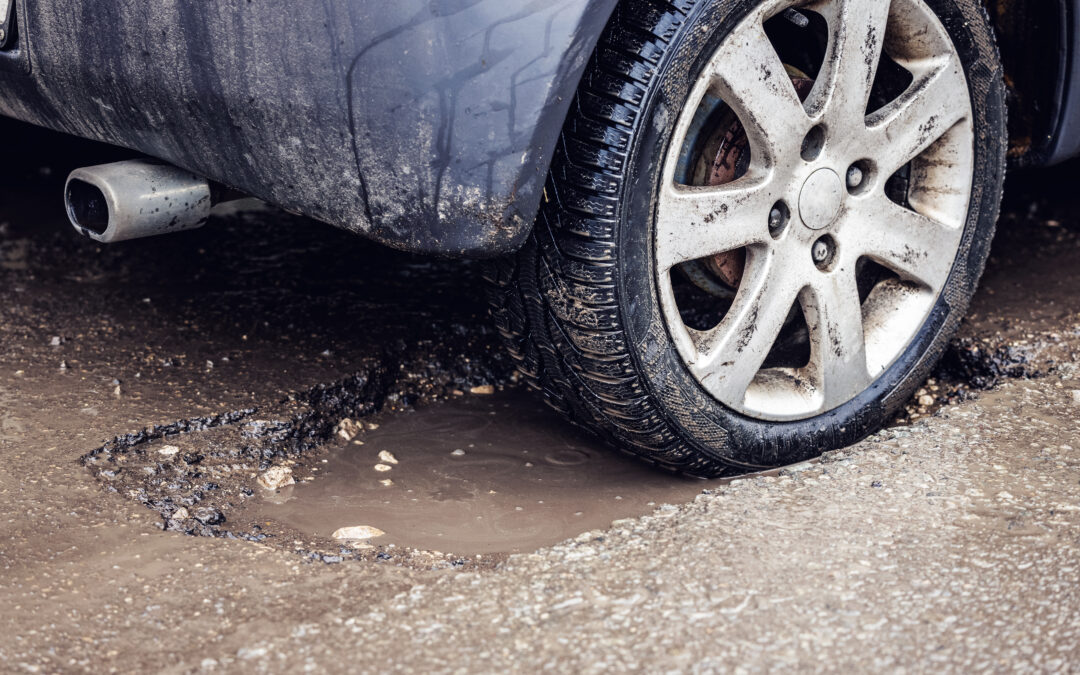Don’t let the annual barrage of orange barrels fool you: Michigan roads are still in rough shape and projected to get worse in future years.
The bumpy state of Michigan roads was confirmed by two new reports released in the last week, including an official Michigan transportation council analysis rating 45 percent of local roads and 33 percent of state roads in poor condition.
A separate industry report card from the American Society of Civil Engineers — whose members design construction projects and would benefit from additional funding — gave Michigan a D for roads, a D+ for bridges and a C- overall.
It’s been worse: The same report card gave Michigan roads a D- in 2018.
“We still have a lot of work to do,” Brad Wieferich, Michigan’s new department of transportation director, told Bridge Michigan.
Both new reports have some positive news for Michigan, where the quality of infrastructure is trending up. That’s because of increased spending from federal stimulus funds and $3.5 billion in borrowing by Gov. Gretchen Whitmer, who has unilaterally put one-time money into the highway system but failed to negotiate a long-term local road funding solution with state legislators.
Such temporary funding won’t last forever: inflation has raised construction prices and road quality is expected to start falling again by 2026.
“Even with the infusion of federal infrastructure dollars and the governor’s bonding program, we still had a significant underinvestment problem here in Michigan,” said Lance Bionenemi of the Michigan Infrastructure and Transportation Association, which represents road builders.
“These grades should be unacceptable to every Michigan citizen.”
Michigan state roads bad, local roads worse
First, the quasi-good news from the state’s Transportation Asset Management Council, which includes state and local transportation officials who compile quality ratings from as many roadways as they can each year.
Their 2022 data, published last week, shows that only about 25 percent of state road and highway miles were rated in “good” condition, along with 42 percent rated “fair” and 33 percent “poor.”
Those ratings were flat from 2021 but up from 22 percent good in 2020.
Only 20 percent of local roads were rated in good condition last year, along with 35 percent fair and 45 percent poor. That too was a modest improvement from 2020, when the council rated a full 50 percent of local roads in poor condition.
Bridges got worse over that same period: For 2022, 34 percent were good condition, down from 36 percent in 2020. Eight percent were rated poor, and 4 percent “severe,” meaning they have been closed to the public due to imminent failure.
The outlook is not great. After topping out at 25 percent in good condition last year, state roads and highways are projected to decline again by 2026. By 2034, the council projects just 20 percent will be in good condition, compared to 48 percent in poor condition.
Roads get a D
While Michigan roads have improved a bit in recent years, the 25 percent rated in good condition in 2022 is still far below the 42 percent nationally, according to the American Society of Civil Engineers.
The group praised recent spending but urged state officials to increase “dedicated funding” for roads and to reconsider the current gas tax and registration fee funding model.
“Despite recent efforts to address these issues, our infrastructure is still under immense strain,” said Brad Ewart president of the society’s Michigan section.
The Michigan chapter represents about 2,500 civil engineering professionals in Michigan who work for both governments and private design companies.
Overall infrastructure gets a C-
The group gave Michigan a C- for overall infrastructure while boosting the state’s 2018 grades for drinking water, rail, roads, schools and stormwater, some of which benefited from a $4.7 billion infrastructure law Whitmer signed last year after negotiating with what was a Republican-led Legislature.
Michigan got worse grades compared to five years ago for both bridges and energy infrastructure, according to the group, which noted recent power outages and said state utilities are generally slower to restore electricity than their peers in other states.
“The transmission and distribution network for our grid is aging beyond just design life and will need to be addressed to prevent worsening outages, particularly as increasingly frequent severe weather events hit the region,” Ewart said.
Whitmer reacts
In a statement, Whitmer spokesperson Bobby Leddy said the governor remains “committed to fixing the damn roads” and will “keep moving dirt and getting things done to save drivers time and money.”
He pointed to the governor’s executive budget recommendation, which calls for a $211.8 million general fund spending increase on transportation, about half of which would go toward debt service on highway construction bonds.
Whitmer, who campaigned on a pledge to “fix the damn roads,” previously told Bridge she won’t ask the Legislature to raise fuel taxes again after lawmakers dismissed her initial road funding plan in 2017.
But, the governor said she hopes to kick-start conversations about how Michigan funds roads amid the continued shift toward electric, hybrid and more fuel-efficient vehicles.
This article originally appeared in Bridge Michigan. For more, click here.

